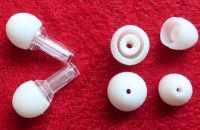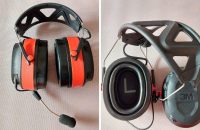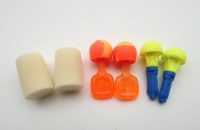Many companies advertise their in-ear headphones as noise isolating or noise cancelling. Often though they are not very specific as to how much noise reduction you will actually get.
Haven Technologies, the company behind ISOtunes specializes in earplug headphones that have been lab-tested and given a noise reduction rating as a hearing protector.
To qualify as a hearing protector, in the U.S., earplugs and earmuffs have to be tested in a laboratory and labeled with a noise reduction rating (NRR). The test method is specified in ANSI standard S 3.19-1974.
The NRR is absolutely essential if you want to use your earphones instead of regular earplugs and the niche ISOtunes are aiming at.
In this review, I am looking at their current top-of-the-line model, the ISOtunes PRO with an NRR of 27.

Contents
What are ISOtunes PRO?
ISOtunes PRO are Bluetooth earphones with a specified battery life of 10 hours continuous playback and a background noise cancelling microphone for phone calls.
They come with three different-sized pairs of memory foam ear-tips and one pair of triple-flange silicon rubber ear tips for less noisy environments.
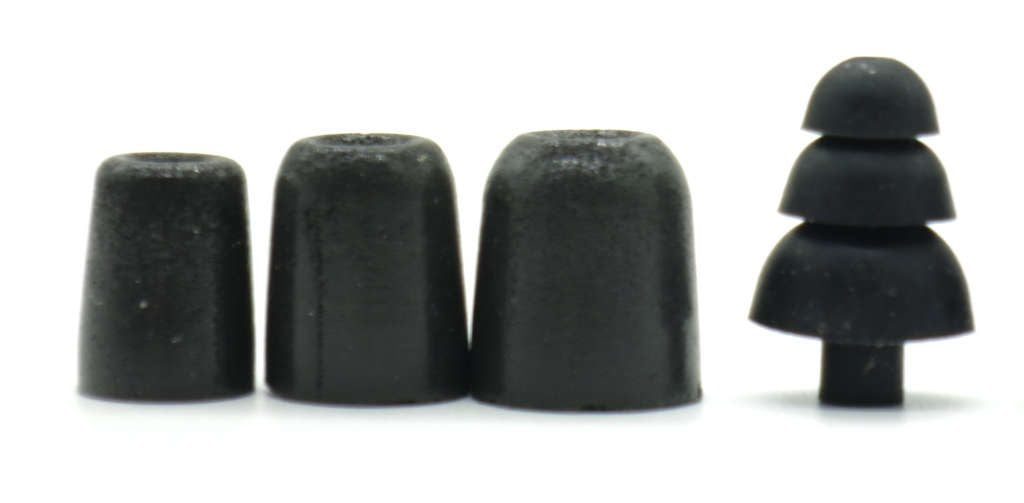
How well do the ISOtunes PRO attenuate noise?
Essentially the ear tips function as earplugs and as such rely on properly sealing the ear canal for noise isolation. They do not feature active noise cancelling for hearing protection.
Over the course of several weeks, I used them multiple times with memory foam tips and the silicon ear tips.
I can get a proper seal with the silicon ear tips.
Unfortunately, despite trying many times and following the instructions and the introductional video, I have not been able to get a seal with any of the foam tips.
ISOtones PRO with foam tips don’t block enough noise for me to use them in a high-noise environment where hearing protection would be required.
I also confirmed this with Quickfit, a simple test provided by NIOSH on their website. This attenuation test uses a band of random noise with a center frequency of 1000 Hz at two different noise levels – 15 decibels apart.
Setting yourself up in a quiet room, you play the quieter noise through speakers (or over-the-ear headphones) and adjust the volume down, so that the signal is just not hearable anymore.
You then insert the earplugs, in this case the ISOtunes, and play the second 15-decibels louder test signal.
If the earplugs attenuate the noise by at least 15 decibels at 1000 Hz, you should not be hearing the second test signal with the plugs fitted.
The only way I was able to achieve this with the ISOtunes was with the triple-flange ear tips, and only when inserted as deep as possible.
So with these ear tips I can use them in a moderate noise environment. Unfortunately my ears hurt after using ISOtunes with these tips after an hour or so.
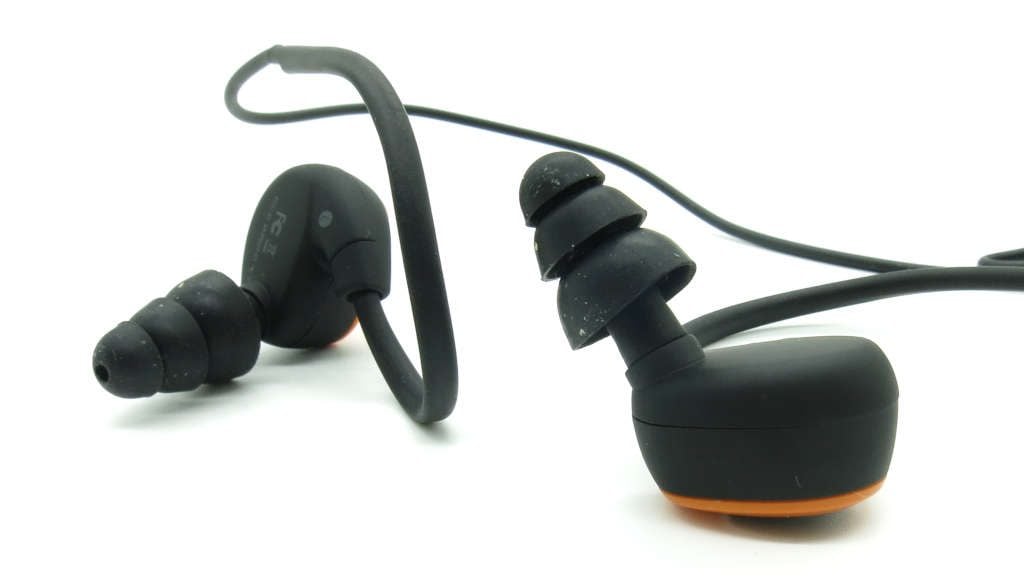
Does that mean ISOtunes PRO don’t work?
It means that they don’t work for me with the currently supplied foam ear tips. But we all have different ear canals.
I have been a regular user of foam earplugs for many years and practiced insertion hundreds of times. I have tried many different types and brands.
With many types of earplugs I can get a good seal, but with others, even highly regarded ones, I can’t.
If you read other people’s reviews for earplugs, you will find a similar pattern. There is just too much variance between different ear canal sizes, shapes, and lengths.
I think the design of the ISOtunes PRO is a bit risky for an out-of-the-box hearing protector. The ear tips are set at an angle to the housing. (These are not custom-molded earpieces made specifically for a certain wearer.)
This limits how and by how much I can insert the ear tips. It also makes it more complicated to fit the ear tips.
This design is quite unlike the design of their other models, the ISOtunes Bluetooth, and the wired ISOtunes, which feature an ear tip that protrudes straight out of the housing.
Update Note: In their newest release, the Bluetooth ISOtunes XTRA 2.0 (reviewed here), the company is yet again employing a straight design. As it turns out, this works much better for me.
I also compared the largest ear tips (below) in terms of length and diameter to regular foam earplugs. They are shorter than regular-sized (orange) and even smaller foam earplugs (purple). But the housing limits by how much you can insert them, and this is less than for regular foam earplugs.
Note that the orange plugs fit me very well, and I completely insert them in my ear. The purple ones also fit, but have to go in deeper.
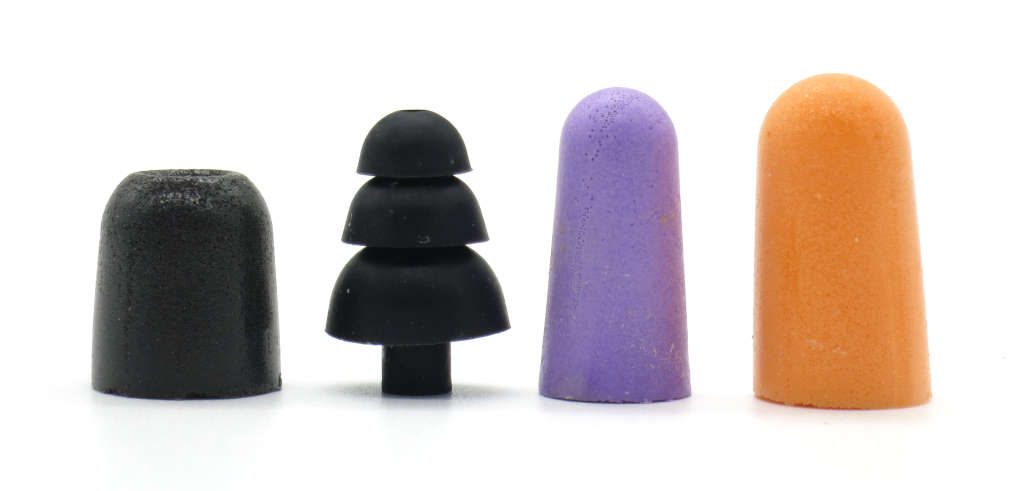

The largest ear-tips (blue thread) are a bit thicker than regular earplugs (but not thicker than larger earplugs), so they could provide a seal at a shallower position. Perhaps they would work for me, if they used the same straight design as in their other models.

One noteable exception to this are the rubber tips. These are nearly as long as foam earplugs, and they work for me.
With this ISOtunes PRO model, I would welcome if the company provided additional sets of longer ear tips, and perhaps one set that is both longer and thicker.
They have been tested in a lab and a certified NRR. They should surely block 27 dB of noise?
In several real-world earplug studies (see for example table 6-1 on page 65) with various brands, many people didn’t even get half the specified noise reduction!
Note: This applies to over-the-counter earplugs in general and is not a fault of ISOtunes.
These studies have concluded that the NRR overestimates (and sometimes by a large margin) the protection the average user can expect from earplugs.
There are various reasons for this:
- When the NRR is determined in a lab, the experimenter fits the earplugs, not the person wearing them.
- What’s more, during the test, the subjects have to sit still. They are neither walking nor working nor eating. Still there is quite some variation between the 10 test-subjects used to calculate the NRR.
- Not every earplug is suitable for every person. There are so many different sizes available that with experimenting and training almost everyone can find a fitting earplug, but there are also a lot of good earplugs that won’t provide a good fit for a particular person.
The NRR is the yardstick we currently have to employ when selecting hearing protectors. But ensuring that a particular protector fits you is paramount to protecting your hearing.
How do ISOtunes PRO sound?
I am mainly commenting on the configuration with the triple-flange tips because this was the configuration that effectively attenuated noise for me.
With these tips, ISOtunes supply a good bass. They sound OK, but a bit nasal and they lack detail in the higher frequencies. Audiobooks and podcasts sound fine.
The sound quality with the foam ear tips is better, but they still lack detail.
Overall, the sound quality should be OK for use in a high-noise environment provided they block enough noise to be effective as a hearing protector. In that kind of environment you wouldn’t hear the finer details anyway.
These would not be my choice if I was only looking for earphones that make life a little quieter to enjoy my music. There are several earbuds in the 10-to-20 dollar range that sound better.
I also tried the noise cancelling microphone for making and receiving phone calls. The call quality was good enough to communicate, but receivers of my calls commented that I sounded a bit like I had the flu. I compared this directly to making calls with a different headset and an external Bluetooth receiver, which was more appreciated.
Battery Life and Bluetooth Connection
Battery life is great: I get about 11 hours of continuous playback time on a single charge, more than the stated 10 hours. If you keep the earphones on standby most of the time, the battery should last you several days.
The Bluetooth connection worked fine for me. Like with other devices, I had occasional cutouts, but nothing out of the ordinary.
I usually keep my phone with me, but even when leaving it on the shelf and moving around in a larger gym, I had no issues.
Wiring, Pairing and Controls

The controls and the microphone are in a small unit on the right side of the headset.
I paired the ISOtunes PRO with an iPad and an Android phone without any issues.
I found the controls for volume (press +/-) track forward/back (long press +/-), answering, ending calls, and pause (central button) intuitive. iOS shows the battery status, which is nice.
The two earbuds are connected through a wire which goes around the back of the neck. When I sweat, this wire sometimes sticks to my skin and pulls on the earbuds when I turn my head. I adjusted the cable length, but that didn’t resolve the problem. So from time to time I have to reach behind my neck and loosen the wire.
Conclusion and Solution
People will buy these to combine hearing protection with listening to music and audio books and making phone calls.
ISOtunes are currently one of very few earplug headphones with both a noise reduction rating (NRR) and Bluetooth. The battery life is great.
The NRR would be adequate for most workshop applications as well as most landscaping work.
I cannot get a seal with any of the supplied foam ear tips that would allow me to attenuate loud noise to a safe level. Only with the triple-flange rubber tips did I get a proper seal. However, I don’t find these tips very comfortable, and according to ISOtunes own description they would only be suitable for moderate noise levels.
So unfortunately, ISOtunes PRO are not for me.
The sound quality is adequate for noisy environments.
If you just need noise-isolating earbuds without an NRR, there are better sounding and cheaper options available. But earbuds without an NRR may not be used as hearing protectors!
The angular design of ISOtunes PRO deviates from other ISOtunes models. In my opinion, this design makes it more difficult to insert the earbuds and limits by how much you can adjust them to get a good fit.
Since I first posted this review, I have tested two additional ISOtunes models: the most recent Bluetooth XTRA 2.0 and the WIRED. Both were purchased at standard retailers.
As it turns out, both of these properly seal my ear canal and offer good noise isolation; it is indeed the angular design of the PRO that doesn’t work for me.
Here are my detailed reviews for these models:
ISOtunes XTRA 2.o review (and tweaks)
ISOtunes WIRED vs. Plugfones Guardian, comparative review
Disclosure: I received an ISOtunes PRO sample in exchange for an honest review. The opinions expressed here are my own and not influenced by the company in any way.

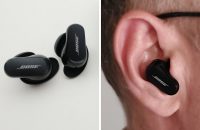
![Flents Quiet Time vs Quiet Contour vs Quiet Please [tested] Flents Quiet Time vs Quiet Contour vs Quiet Please [tested]](https://noisyworld.org/wp-content/uploads/2021/06/flents-foam-earplugs-comparative-review-200x130.jpg)
![Active Noise Cancelling vs Noise Isolating Headphones [Tested] Active Noise Cancelling vs Noise Isolating Headphones [Tested]](https://noisyworld.org/wp-content/uploads/2021/09/noise-cancelling-vs-noise-isolating-headphones-200x130.jpg)
